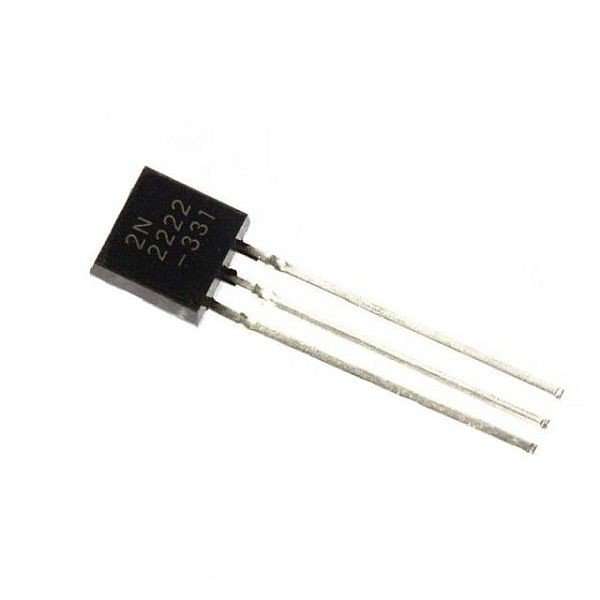
The Base-Emitter voltage of this transistor is 6V so you just have to supply this voltage across the base and emitter of the transistor to induce a base current into the transistor. This transistor like all can be used either as a switch or as an amplifier. The followings are2N2222A Symbol, Footprint, and 3D Model. Pin3 (Emitter): The emitter pin is the third pin of the transistor & it is used to drain out the complete current of the transistor.ĢN2907(PNP), 2N3904(PNP), 2N3906 (PNP), BC637, S9014, BC148, 2N4403, MPS2222, PN2222, KN2222, KTN2222.The main function of this pin is to control the current from emitter to base. Pin2 (Base): The base pin is a control pin & it is a second pin of the transistor.The main function of this pin is to provide transistor current toward the o/p load. Pin1 (Collector): This is the first pin of the transistor & it is an o/p pin.This transistor includes three pins & its each pin functionality is discussed below. The pin configuration of the 2N2222A transistor is shown below. Continuous Collector current (IC) is 800mA.Video: 2N2222 NPN Transistor as a switch - Arduino example with LED Flash This blog will introduce 2N2222A systematically from its features, pinout to its specifications, applications, also including 2N2222A datasheet and so much more. When base current is removed the transistor becomes fully off, this stage is called as the Cut-off Region and the Base Emitter voltage could be around 660 mV. This stage is called Saturation Region and the typical voltage allowed across the Collector-Emitter (VCE) or Base-Emitter (VBE) could be 200 and 900 mV respectively. When this transistor is fully biased then it can allow a maximum of 800mA to flow across the collector and emitter. To bias a transistor we have to supply current to base pin, this current (IB) should be limited to 5mA. The maximum amount of current that could flow through the Collector pin is 800mA, hence we cannot connect loads that consume more than 800mA using this transistor. 2N2222A has a gain value of 110 to 800, this value determines the amplification capacity of the transistor. The 2N2907 and BC327 are PNP transistors.2N2222A is a NPN transistor hence the collector and emitter will be left open (Reverse biased) when the base pin is held at ground and will be closed (Forward biased) when a signal is provided to base pin. The BC84x family are surface mount versions. The BC54x are modern replacements for the BC10x family. The BC10x family of transistors have a maximum current of only 100mA and are not recommended.


The much lower VCE sat will more than compensate for this anyway. Metal can transistors normally have a lower thr J/ amb, so the PN2222 and BC337 possibly have a higher thermal resistance but this should not be a problem, in practice. But the slightly lesser VCEo of the PN2222 and BC337 will not be a problem for this application. J temp max: 200 deg C (probably a misprint and should be DegCW)Īs the impedance of the buzzer is unknown it is not possible to say whether a lesser transitor will be OK. The SL100 is also in a metal can, so probably has a lower thermal resistance junction/ambient than plastic case types. The SL100 is an obsolete low power, high conductance transistor, rather than a small signal, high hFE (current gain) low noise transistor.


 0 kommentar(er)
0 kommentar(er)
